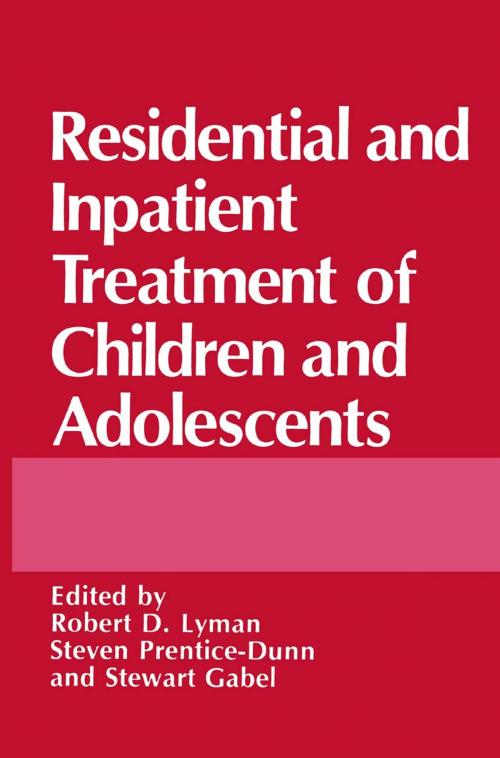Residential and Inpatient Treatment of Children and Adolescents
Nonfiction, Health & Well Being, Medical, Specialties, Psychiatry, Psychology, Clinical Psychology| Author: | ISBN: | 9781489909275 | |
| Publisher: | Springer US | Publication: | June 29, 2013 |
| Imprint: | Springer | Language: | English |
| Author: | |
| ISBN: | 9781489909275 |
| Publisher: | Springer US |
| Publication: | June 29, 2013 |
| Imprint: | Springer |
| Language: | English |
Residential and inpatient treatment of children and adolescents is a field that is still in the process of defining itself and of demonstrating its effectiveness. Because of the continuous nature of the field's development, it is especially important that a broad range of its theoretical orientations and therapeutic techniques be considered and critically appraised. Residential and inpatient treatment is unique in its potential for both positive and negative outcomes. No other interventions can bring about the major changes in all aspects of a child's environment that inpatient hospitalization or residential treatment can. These changes may result in rapid and significant improvements in a child's condition, or they may conceivably lead to additional maladaptive behavioral patterns or inappropriate emotional and cognitive responses. Therefore, the obligation to consider the entire range of treatment alterna tives and to empirically determine the effectiveness of specific interventions is particularly great. Residential and inpatient treatment is also an expensive and limited resource, and our wise utilization of it should be guided by a comprehensive understanding of its benefits and limitations.
Residential and inpatient treatment of children and adolescents is a field that is still in the process of defining itself and of demonstrating its effectiveness. Because of the continuous nature of the field's development, it is especially important that a broad range of its theoretical orientations and therapeutic techniques be considered and critically appraised. Residential and inpatient treatment is unique in its potential for both positive and negative outcomes. No other interventions can bring about the major changes in all aspects of a child's environment that inpatient hospitalization or residential treatment can. These changes may result in rapid and significant improvements in a child's condition, or they may conceivably lead to additional maladaptive behavioral patterns or inappropriate emotional and cognitive responses. Therefore, the obligation to consider the entire range of treatment alterna tives and to empirically determine the effectiveness of specific interventions is particularly great. Residential and inpatient treatment is also an expensive and limited resource, and our wise utilization of it should be guided by a comprehensive understanding of its benefits and limitations.















